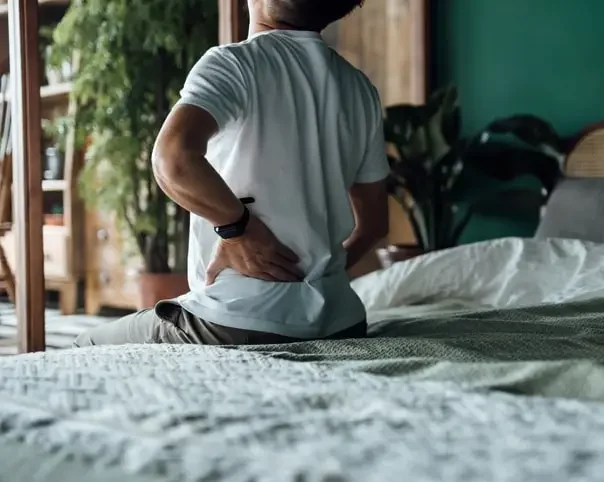Surgical removal of the gallbladder, a procedure known as cholecystectomy, is very common. Situated in the upper right portion of the abdomen, the gallbladder is a small pouch-like organ responsible for storing bile, an essential fluid produced by the liver to aid in the digestion of fatty foods. Given that the gallbladder is non-essential, surgical intervention to remove it is commonly suggested in the event of any complications. Like any abdominal surgery, proper post operative care is crucial to support healing and ensuring a smooth recovery.
Why does one’s gallbladder need to be removed
The removal of the gallbladder through surgery is typically performed in cases where individuals experience discomfort due to gallstones. These small stones can develop in the gallbladder when there is an imbalance in the composition of bile. While gallstones may often be asymptomatic and go unnoticed, they can occasionally obstruct the flow of bile, leading to irritation of the gallbladder (acute cholecystitis) or pancreas (acute pancreatitis). Symptoms may include sudden and severe abdominal pain, nausea, and yellowing of the skin and eyes (jaundice). In the majority of instances, surgical removal of the gallbladder proves to be the most effective treatment. With effective post-operative care, most individuals can resume their normal activities within a few weeks after surgery.
What happens during gallbladder removal surgery
The process of gallbladder removal surgery involves two primary methods:
-
Laparoscopic (keyhole) cholecystectomy:
- This technique entails making several small incisions in the abdomen. Through these, fine surgical instruments are employed to access and remove the gallbladder.
-
Open cholecystectomy:
- In this approach, a single larger incision is made in the abdomen to access and remove the gallbladder.
Laparoscopic cholecystectomy is the more common choice due to its advantages. Patients undergoing this method typically experience a shorter hospital stay. They have quicker recovery, and are left with smaller scars compared to the open procedure. Both procedures are conducted under general anaesthesia, ensuring that you remain asleep throughout the operation, free from any sensation of pain. For more advice on what to eat after surgery, read our article the role of nutrition in post operative care.
Recovering from gallbladder removal surgery
Recovery after undergoing laparoscopic gallbladder removal surgery is typically swift. Many individuals can be discharged from the hospital on the same day or the following morning. Resuming most normal activities usually takes about 2 weeks. In contrast, the recovery period for open surgery is more extended. Hospital stay may extend to 3 to 5 days, and it might take 6 to 8 weeks before returning to a normal state of wellbeing.
Find out more about our post operative care services
Living without a gallbladder
Living a completely normal life without a gallbladder is entirely feasible. Although your gallbladder is removed, your liver will still produce sufficient bile for the digestion of food. Rather than being stored in the gallbladder, bile continuously flows into your digestive system. While you might have received dietary recommendations before surgery, there is typically no need to adhere to a special diet post surgery. Instead, it is advisable to maintain a generally healthy and balanced diet. Following the procedure, some individuals may experience temporary issues like bloating or diarrhoea, which often improve within a few weeks. If specific foods or drinks seem to trigger these symptoms, you may choose to avoid them in the future.
What to eat after gallbladder surgery
You can typically resume a normal diet after gallbladder surgery within a week or so, but it’s advisable to follow your surgeon’s postoperative dietary recommendations for a smoother recovery.
Here are some examples of what to eat for breakfast after gallbladder surgery:
- Oatmeal:
- Go for plain oatmeal made with water or low-fat milk. Avoid adding too much sugar or high-fat toppings.
- Yogurt:
- Choose plain, low-fat yogurt. Consider adding a small amount of low-fat granola or fresh berries for flavour.
- Eggs:
- Scrambled or boiled eggs are good protein sources. Avoid frying and consider using minimal oil or butter.
- Whole grain toast:
- Enjoy a slice of whole grain toast with a light spread of low-fat cream cheese or a small amount of nut butter.
- Bananas:
- Bananas are easily digestible and a good source of potassium. They can be added to yogurt or eaten on their own.
- Smoothies:
- Blend a smoothie with low-fat yogurt, fresh fruits (such as berries or banana), and a handful of spinach or kale.
Remember to introduce these foods gradually and pay attention to your body’s response. If you experience any discomfort or digestive issues, it may be helpful to consult with your healthcare provider for personalized advice.
How can Cavendish Homecare help?
At Cavendish Homecare, we are experts in providing post operative homecare for clients who want to remain in their own homes. When it comes to your health and wellbeing, choosing the right homecare package is of utmost importance and navigating this process can be overwhelming. With Cavendish Homecare by your side, you’ll have the support you need to remain safely at home while enjoying elevated health and wellbeing.
If you would like to enquire about our homecare services, contact us on, 02030085210 or email us at info@cavendishhomecare.com.

About the Author…
Colleen Liston
Commercial Manager
Colleen blends strategic insight with creativity to drive growth and efficiency. With a background in construction management and deep roots in the care sector, she’s passionate about making a meaningful impact and supporting the team behind the scenes.
 Back
Back